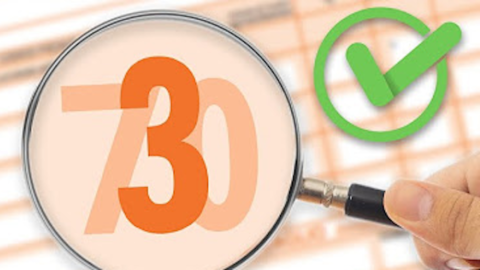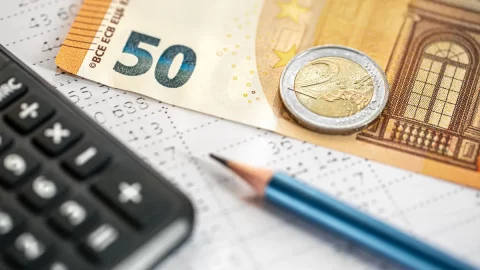In the forest of deductions to keep in mind for the tax return, a special place belongs to the Art Bonus, which guarantees a tax credit to anyone who donates money to enhance the Italian cultural heritage. Introduced in May 2014 on the initiative of Prime Minister Matteo Renzi and the Minister for Cultural Heritage and Activities Dario Franceschini, the tax discount was made permanent with the 2016 Stability Law.
WHAT BONUS DOES THE ART BONUS PROVIDE?
In general, the Art Bonus consists of an Irpef deduction equal to 65% of the amount of "liberal donations in support of culture", to be divided into three equal annual installments.
But there are gods maximum limits, equal to 15% of taxable income for natural persons and entities that do not carry out business activities and al 5 per thousand of annual revenues for business income holders.
WHICH INTERVENTIONS IS THE ART BONUS VALID FOR?
The Art Bonus is triggered when donations are destined for the following interventions:
– maintenance, protection and restoration of public cultural assets;
– support for institutions and places of culture belonging to the public (e.g. museums, libraries, archives, archaeological areas and parks, monumental complexes) of opera-symphonic foundations and traditional theatres;
– construction of new structures, restoration and strengthening of existing ones, of public bodies or institutions which, on a non-profit basis, carry out exclusively entertainment activities.
In all cases, donations must go to public property. Donations for the benefit of privately owned cultural assets (including non-profit ones), including those of ecclesiastical bodies, are therefore excluded from the Art Bonus.
HOW SHOULD DONATIONS BE MADE?
The Revenue Agency has established that, to benefit from the Art Bonus, donations must be made by bank (for example with a wire transfer), post office, debit, credit and prepaid cards, bank and cashier's checks. Basically, cash donations cannot benefit from the tax credit, as they do not offer sufficient guarantees of traceability.
HOW DO I ENJOY THE ART BONUS?
Natural persons and entities that do not carry out business activities can indicate the bonus directly in the tax return (in line G9 of form 730). Business income holders, on the other hand, can only use the credit as compensation, or to pay other taxes.
The relief must always be divided into three annual installments of equal amount, therefore, depending on the case, the first installment must be indicated in the tax return relating to the year of the donation or used as compensation starting from the first day of the tax period following the one in which the donation was made.
WHICH OBLIGATIONS SHOULD BE REMEMBERED?
To be entitled to the Art Bonus, the person making the donation must keep the receipt of the financial transaction with the indication of the reason for the Art Bonus followed by the entity that collects and the object of the donation. For their part, the beneficiaries are required to communicate each month the amount of donations received and their use on their institutional websites and on the portal www.artbonus.gov.it.
WHAT ARE THE OTHER “ARTISTIC” TAX BONUSES?
The Art Bonus is not the only final discount guaranteed to those who donate to the world of culture. Indeed, the foreseen deductions are different:
– for donations to the Venice Biennale. Whoever provides tax assistance (Caf, professional or substitute) will calculate the deduction due on an amount not exceeding 30 per cent of the total income (which in this case also includes the income of buildings subject to dry coupon). The amount must include the disbursements indicated in the "Deductible charges" section of the Single Certification with tax code 24.
– For expenses related to goods subject to restrictions. These are the expenses incurred by taxpayers obliged to maintain, protect or restore the assets subject to the constraint regime. The amount must include the disbursements indicated in the "Deductible expenses" section of the Single Certification with the burden code 25. This deduction can be combined with the 50% deduction for restructuring costs, but in this case it is reduced by 50%. Therefore, the expenses for which the deduction has been requested can also be indicated in this line to the extent reduced by 50%.
– For donations in cash in favor of cultural and artistic activities. Cultural initiatives must be authorized by the Minister for Cultural Heritage and Activities. The documentation required to benefit from the deduction is replaced by a substitutive declaration of the deed of notoriety presented to the Ministry for Cultural Heritage and Activities and relating to the expenses actually incurred for which one is entitled to the deduction. The amount must include the disbursements indicated in the "Deductible charges" section of the Single Certification with tax code 26.
– For donations in favor of entertainment institutions. Whoever provides tax assistance will calculate the deduction due on an amount not exceeding 2% of the total income (which in this case also includes the income of the buildings subject to dry coupon). The amount indicated in the line must include the disbursements indicated in the "Deductible charges" section of the Single Certification with charge code 27.
– For donations in cash in favor of foundations operating in the music sector. The deduction is calculated on an amount not exceeding 2% of the total income (which in this case also includes the income of the buildings subject to dry coupon). The limit is raised to 30% for sums paid to the foundation's assets by private individuals at the time of their participation or as a contribution to the management of the institution in the year in which the decree approving the resolution to transform it into a foundation is published. The amount must include the disbursements indicated in the "Deductible charges" section of the Single Certification with tax code 28.





